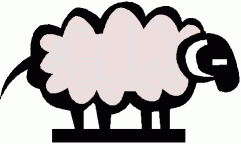Minor party preference flows 2013 federal election in descending order of 2010 - 2013 change* |
2013 |
2010 |
Change 2010 to 2013 | |||||
| Party | Votes | % | % prefs to ALP | Votes | % | % prefs to ALP | |
| Secular Party of Australia | 4834 | 0.0 | 70.2 | 12752 | 0.1 | 51.6 | +18.6 | Independent | 177217 | 1.4 | 57.1 | 312496 | 2.5 | 43.5 | +13.6 | Citizens Electoral Council | 10400 | 0.1 | 50.6 | 8017 | 0.1 | 37.7 | +13.0 | Socialist Alliance | 5032 | 0.0 | 81.0 | 9348 | 0.1 | 73.4 | +7.6 | The Greens | 1116918 | 8.7 | 83.0 | 1458998 | 11.8 | 78.8 | +4.2 | Non-Custodial Parents Party | 1547 | 0.0 | 59.3 | 2835 | 0.0 | 55.1 | +4.2 | Australian Sex Party | 78571 | 0.6 | 62.6 | 11263 | 0.1 | 60.1 | +2.6 | Christian Democratic Party | 88576 | 0.7 | 28.5 | 83009 | 0.7 | 26.5 | +2.0 | Family First | 181820 | 1.4 | 41.7 | 279330 | 2.3 | 40.2 | +1.5 | The Nationals | 67232 | 4.3 | 24.6 | 24009 | 3.7 | 23.4 | +1.1 | Non Affiliated | 4850 | 0.0 | 52.1 | 2508 | 0.0 | 51.1 | +1.0 | Liberal | 23363 | 32.0 | 9.2 | 61254 | 30.5 | 9.0 | +0.2 | One Nation | 22046 | 0.2 | 44.9 | 27184 | 0.2 | 45.2 | -0.3 | DLP - Democratic Labor | 36086 | 0.3 | 56.5 | 5212 | 0.0 | 59.0 | -2.6 | Democrats | 3614 | 0.0 | 52.7 | 22376 | 0.2 | 56.9 | -4.1 | Liberal Democrats (LDP) | 4716 | 0.0 | 20.4 | 24262 | 0.2 | 27.9 | -7.5 | Australia First Party (NSW) Incorporated | 7412 | 0.1 | 40.3 | 3670 | 0.0 | 48.6 | -8.3 |
| From this and this AEC page. Flows are to Labor versus Coalition, so the Coalition figures are 100 minus the Labor ones. These are across all electorates, not just those where preferences were actually distributed. | The exception is the Liberal and National figures, which are for three-cornered contests only; hence the small total votes (that don't correspond with the percentage votes (in "%" columns) which are actual total national votes. The Liberal and National figures can't be compared with the others. They don't really belong here. Of most interest is the much higher Labor flow from Nationals (24.6%) than Liberal (9.2%) voters. This table doesn't show parties that didn't contest in 2010. They can be found in this table, which ranks by order of 2013 flow. |

